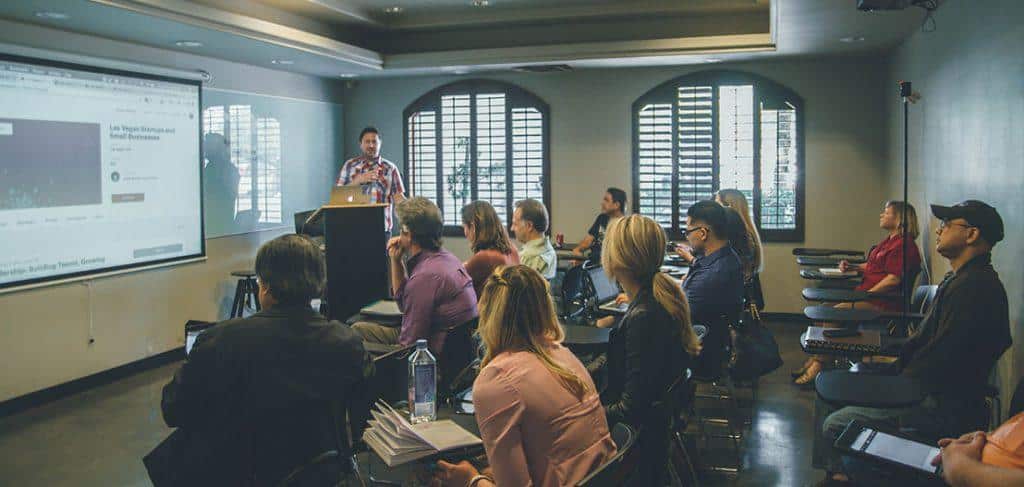In her fascinating, forward-thinking book, Long Life Learning: Preparing for Jobs That Don’t Even Exist Yet, Michelle Weise imagines a not-so-distant future in which employees experience over 20 career transitions and proposes a new model for employee education that prioritizes an understanding of technological advances and merges the worlds of traditional education and business in radical ways.
Here are four of the book's biggest and most compelling ideas—and some thoughts on how they might apply to HR professionals like you:

Big Idea #1: Transformative tech (like AI) is everywhere—but there’s still a huge understanding gap
Weise argues that as AI takes center stage as “the new electricity,” employees will need to develop both the intellectual dexterity and technical expertise to keep up. Weise calls this combination of skills “human + technical skills.” In action, they’re pairs like emotional intelligence and artificial intelligence, ethics and logic, and communication and programming.
The problem? Most American employers are woefully behind in making this kind of education a priority. One country that’s a good model is Finland. They’re currently teaching people the basics of AI, along with pointing out its possible flaws, to strategically prepare their citizens for the world they know is coming.
HR Takeaway: Consider developing a program in the next few years that trains your employees on the basics of AI and how it applies to your field. This will prepare them for success as their role at your company evolves to lean more heavily on the human skills or “soft skills” that AI can’t simulate (yet).

Big Idea #2: Solving problems for those struggling the most is often the spark for positive systemic change
Weise says that lifting up those who are struggling to find their footing in the workplace will benefit everyone. A great example of this in action: after Michael Pachovas and friends created sloping curb ramps in their Berkeley, California neighborhood as an act of defiance, their influence rippled throughout the U.S., ultimately resulting in the Disabilities Act. Once exclusion was banned and curb cuts became the norm, everyone from mothers pushing strollers to travelers with luggage benefited.
Weise says that “By cutting into the curb and focusing on those who are faltering in the cracks today, we can begin building more easily navigable pathways to meaningful careers and lives for more people. Ultimately, this isn’t just about a single transition from education to work but a series of transitions over a lifetime. Solve the pain points for those who are most distressed, and everyone benefits.”
HR Takeaway: As a hiring manager, one way you can "solve the pain points" for candidates who are most distressed is by giving potential as much weight—if not more—than pedigree. Candidates who didn’t have the opportunity to get the best possible education, or have been victims of unconscious bias, often get passed over for jobs they would excel in. If you focus less on a candidate's education and work history and more on which candidates have the inherent intelligence, personality, motivation, and skill set for the job, your team could experience a decrease in overall churn and a boost in productivity.

Big Idea #3: The companies that win the talent wars of the future will be those that prioritize continuous learning and the reskilling of their employees
According to Weise, the future of work could have the average person making 20-30 career transitions in their lifetime. But a new learning ecosystem will be required to make those transitions possible. To illustrate this, Weise shares the story of an IT specialist named Steve.
After two decades in the role, and tired of the physical strain that came with the job, Steve was looking to make a transition. He considered becoming a teacher, as he liked kids and the job offered security. The problem? Becoming a teacher would require Steve to go back to school and get his bachelors degree, and he couldn’t afford to stop working. Taking an assessment showed Steve that he had transferable knowledge for positions like client services product coordinator, IT project manager, and network systems analyst. Armed with this knowledge, Steve planned his more attainable (and still rewarding) transition.
Weise argues that “by investing in their people and preparing them for the work ahead with continuous learning pathways and reskilling and upskilling opportunities, companies will not only demonstrate goodwill, but they will also ultimately serve corporate self-interest and survival.” In other words, the businesses that begin building talent—instead of always buying talent—will win the talent wars of the future and reap dividends on their intermediate and long-term competitiveness.
HR Takeaway: Invest in your employees and your company by giving them the training and education they need to develop skills that will serve them well as the reality of work rapidly evolves. Also work to create a culture where employees don’t feel afraid to admit they’d like to spread their wings a little more, for fear they’ll be seen as ungrateful.

Big Idea #4: Open systems that connect education with industry in new ways will be key
Weise makes the case that workers need more information to help them navigate education and career opportunities. She makes the case that “the only way to connect navigation with comprehensive advising support, better funding options, targeted, relevant, and timely education, and transparent hiring is to fill in our information gaps and integrate data better.”
In other words, companies will benefit from helping create a more robust and open data infrastructure and an ecosystem where employees can thrive throughout their lifelong careers. To properly serve working learners, the ecosystem needs to connect all five of Weise’s guiding principles: it needs to be navigable, supportive, targeted, integrated, and transparent.
One company that’s ahead of the curve, she writes, is BrightHive, a data technology company. They’re collaborating with employers, state and federal agencies, and nonprofits to link data and empower individual and collective decision making. By working towards connecting education and workforce data sets, BrightHive is filling an information gap in the talent marketplace that will empower employees to make better decisions about educational opportunities.
HR Takeaway: Companies can help create the ecosystem Weise describes by making sure their job descriptions are as accurate and transparent as possible (conducting a job analysis with the help of I-O psychologists can help), and by partnering with continuing education institutions to train up their workforce to meet the new challenges they're facing head-on.
Anyway, that’s the book in a nutshell. To dive in deeper, check it out at your local library, or buy it at Alibri, Amazon, or Half-Priced Books. And you can follow Michelle Weise on Twitter and LinkedIn. Thanks for reading!
